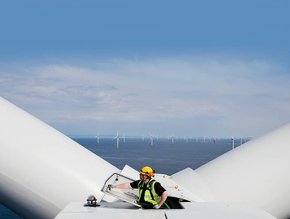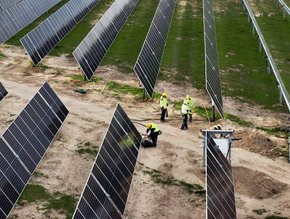Massachusetts Ranked Most Energy Efficient State

Last week the American Council for an Energy-Efficient Economy (ACEE) announced its annual rankings of the most and least energy efficient states in the US. Taking into account the state-level programs and policies each state uses to encourage energy efficiency, it was a surprise to see Massachusetts trump California, considering California became the first state to enact the cap-and-trade system on the same day of the announcement. So how did they do it?
“Thanks to our investments in innovation and infrastructure, Massachusetts is now leading the nation in energy efficiency,” Massachusetts Governor Deval Patrick told the ACEE. “Through our Green Communities Act, we set aggressive goals and laid the foundation for greater investment in energy efficiency -- and now we are proud to be a model for the nation and world.”
The Green Communities Act, signed by Patrick in 2008, helped the state take giant steps toward a clean energy future under a bold and comprehensive bill. Under the new law, major utility companies in the state are required to purchase all available energy efficient retrofits that compete with electricity, allowing customers to save on utilities and make upgrades to current energy systems in their homes. The utility companies were also required to enter 10 to 15 year contracts with renewable energy developers, in turn, financing clean energy developers to get started on future projects.
“With this legislation, Massachusetts takes its rightful place as a national leader in energy reform and environmental protection,” according to Secretary of Energy and Environmental Affairs Ian Bowles in a 2008 statement. “This legislation will help businesses and residential consumers fight rising energy costs, reap the benefits of renewable energy, and grow our clean energy industry.”
SEE OTHER TOP STORIES IN THE ENERGY DIGITAL CONTENT NETWORK
Groundbreaking Energy Efficiency Bill for Homeowners
An Ultra-Efficient LED Bulb Below $15?
October's issue of Energy Digital has gone live!
The ACEE's top 10 energy efficient states are ranked as follows: Massachusetts (#1 for the first time), California (after holding the top spot in all of ACEE's previous four rankings), New York, Oregon, Vermont, Washington, Rhode Island, Minnesota, Connecticut and Maryland.
The 10 states listed as needing the most improvement were, from last place, North Dakota, Wyoming, Mississippi, Kansas, Oklahoma, South Carolina, West Virginia, Missouri, Alabama and South Dakota.
The ACEE also found that total budgets for electricity efficiency are up by over a billion dollars since 2009, and many states have adopted energy-saving programs, including the Energy Efficiency Resource Standard (EERS).






